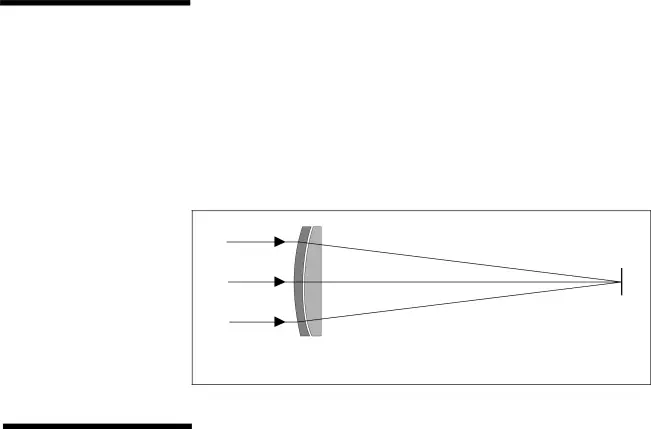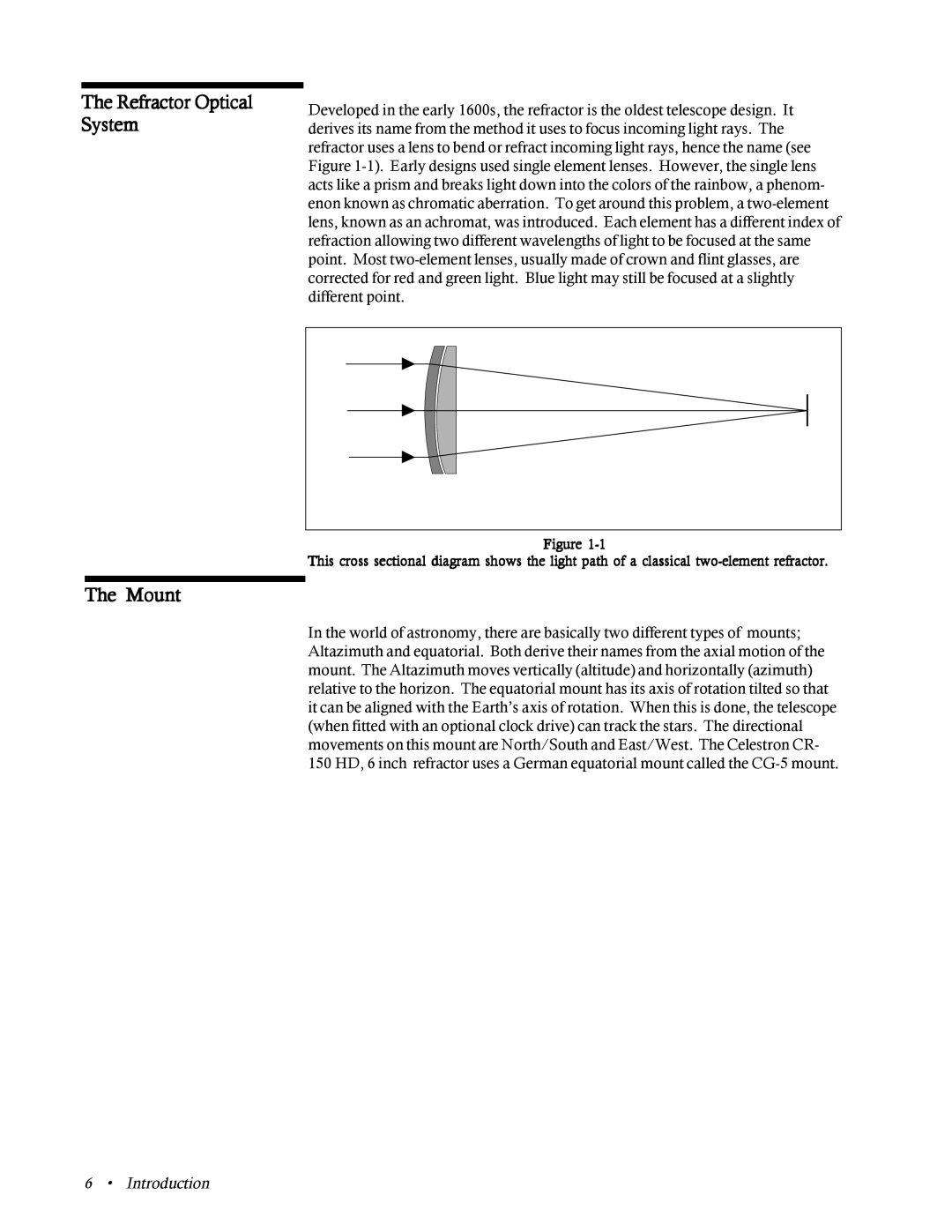
The Refractor Optical System
Developed in the early 1600s, the refractor is the oldest telescope design. It derives its name from the method it uses to focus incoming light rays. The refractor uses a lens to bend or refract incoming light rays, hence the name (see Figure
Figure
This cross sectional diagram shows the light path of a classical
The Mount
In the world of astronomy, there are basically two different types of mounts; Altazimuth and equatorial. Both derive their names from the axial motion of the mount. The Altazimuth moves vertically (altitude) and horizontally (azimuth) relative to the horizon. The equatorial mount has its axis of rotation tilted so that it can be aligned with the Earth’s axis of rotation. When this is done, the telescope (when fitted with an optional clock drive) can track the stars. The directional movements on this mount are North/South and East/West. The Celestron CR- 150 HD, 6 inch refractor uses a German equatorial mount called the
